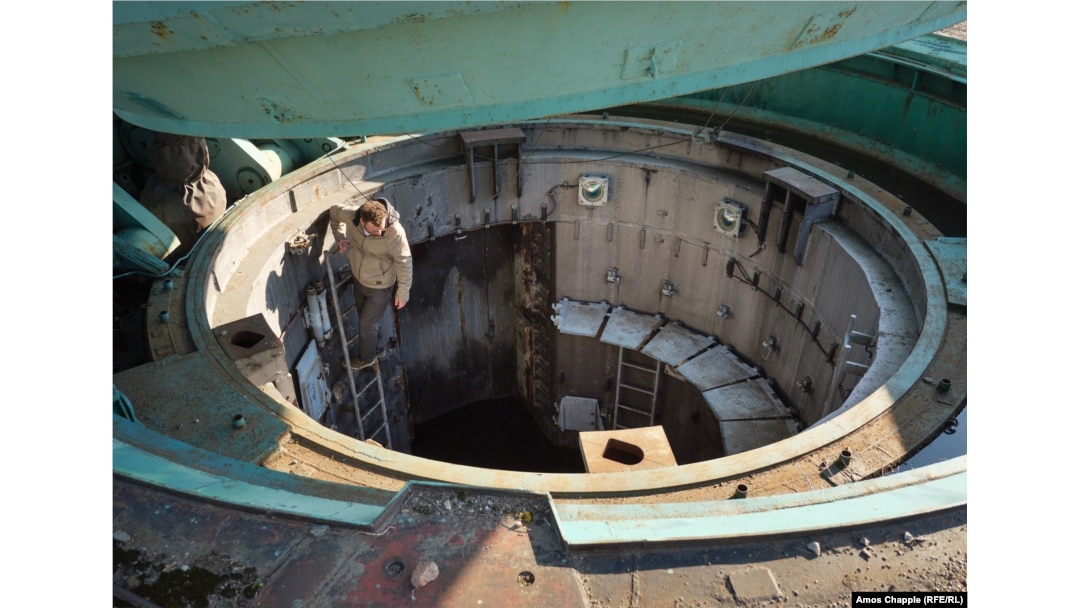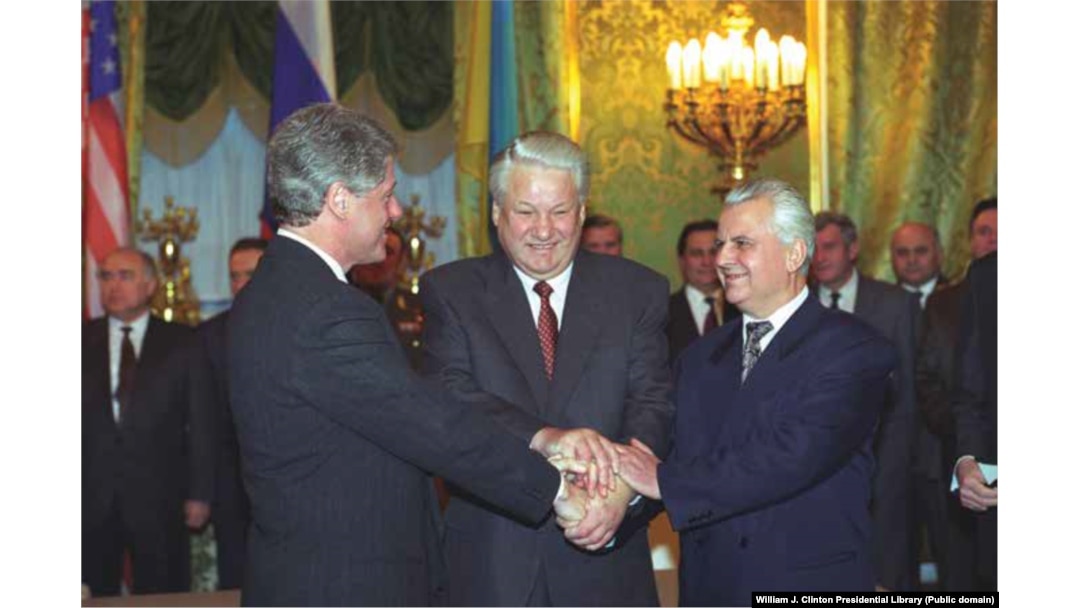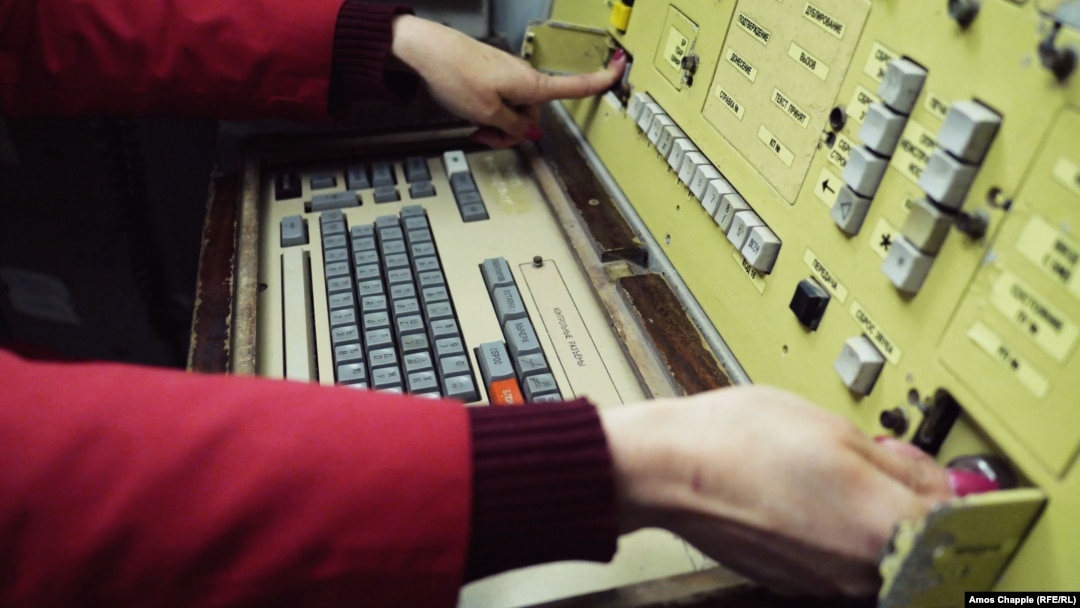Images from the only intact remnant of Ukraine's destroyed nuclear missile network.

Inside this empty silo in the countryside south of Kyiv, a nuclear missile -- capable of hitting New York within 25 minutes of launch -- once stood at the ready.

The missile silo near Pervomaysk is the only intact remainder of what was once an array of nuclear bases in Ukraine.
Soviet Ukraine held around one-third of the U.S.S.R.'s nuclear arsenal, most of which was aimed toward the United States.

(Left to right) U.S. President Bill Clinton, Russian President Boris Yeltsin, and Ukrainian President Leonid Kravchuk shake hands in Moscow on January 14, 1994.
After the breakup of the U.S.S.R., the United States, Russia, and the United Kingdom persuaded Ukraine and several other former Soviet states to eliminate nuclear weapons on their territory.
In return, the nuclear-armed countries signed a memorandum that included the vow "to refrain from the threat or use of force" against Ukraine, and to respect its existing borders.
A missile silo in Ukraine's Mykolayiv region is destroyed with explosives in September 1998.
While every other nuclear missile silo was destroyed across Ukraine, the Pervomaysk site was permitted to remain as a museum.
A Ukrainian soldier stands near an entrance to the Pervomaysk missile base in April 2019.
In April 2019, RFE/RL visited the site when it was little more than a historical curio. Today, the images taken inside the formerly secret base take on new significance in light of the invasion of Ukraine by nuclear-armed Russia.
The heart of the base is accessed through this 750-kilogram door. Some of the men who staff the decommissioned site today worked as Soviet soldiers when it was an active missile base.
A model of the missile base's underground command center.
Within its massive steel shell, the cylinder-shaped base was suspended on shock absorbers to insulate the soldiers and equipment inside from the earthquake-like violence of a nuclear strike. The bottom room in the model above shows where the servicemen slept or took breaks. Above that is the command center.
The command center of the missile base, located nearly 40 meters underground.
The missile of the Pervomaysk site was in a separate chamber around 100 meters from the command center.
Seat belts were worn at all times while the Soviet servicemen were on duty in case of an enemy missile strike. One shift was six hours long.
A local guide inside the control room demonstrates the key (right) and button that would have launched a nuclear strike.
To fire this base's missile, two officers sitting at different consoles needed to perform the same action simultaneously. The "four hands" system made it virtually impossible for one person to launch a nuclear strike alone.
This was the living quarters for the commanders at the base.
Inside the living space is a shelf for storing pistols. Local guide Olena Smerychevska told RFE/RL the weapons were in case soldiers refused to launch a nuclear strike when the command came from Moscow. A military expert strongly disputed that claim, saying the pistols were more likely for self-defense.
Ladders from the living area up to the command center of the underground base.
Above ground, the base was ringed with bunkers (above) fitted with 360-degree shooting slits, and a powerful electric fence.
Military vehicles inside the missile base.
Smerychevska said the Pervomaysk base and others like it that existed in the area were so secret that even today some locals are reluctant to talk about them.
A samovar for brewing tea inside the command center.
According to Smerychevska, after the collapse of the Soviet Union, some of the men who staffed the Soviet Ukrainian bases moved to Russia to continue in the same job.
The gray button (center) that would have been pressed to launch a nuclear attack.
"Right now, there is someone sitting in front of these buttons and thinking about pressing them," Smerychevska said.


